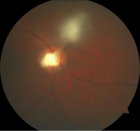Abstract
Research Article
Comparision of intra cervical PGE2 gel and transcervical Foley’s catheter for pre-induction cervical ripening
Vaishali Singh* and Paras Nath
Published: 03 May, 2022 | Volume 5 - Issue 2 | Pages: 051-054
Introduction: Induction of labour is a common obstetric intervention, occurring in approximately 25% of term pregnancies in developing countries. Pharmacological and mechanical methods commonly used are prostaglandin preparations (PGE1 and PGE2) and various intracervical catheters (single or double balloon), respectively.
Material and methods: Study was conducted in Siliguri District Hospital, Siliguri, Darjeeling, west Bengal. 100 antenatal woman admitted in obstetrics ward with pog more than 37 weeks were taken for study after applying inclusion and exclusion criteria. 50 were induced with cerviprime gel and 50 with intracervical foley catheter. Statistical analysis done.
Results: Mean interval between treatment initiation and delivery was not statistically significant, tachysystole was more common in group B women, rate of LSCS and NVD was similar in both groups.
Conclusion: It can be concluded from the present study that Foley’s catheter (mechanical) and prostaglandin E2 gel [pharmacological] both are effective agents for preinduction cervical ripening which substantially improve the bishops score and increase the chances of successful labour induction. There is no significant difference in their efficacy, mode of delivery and perinatal outcome.
Read Full Article HTML DOI: 10.29328/journal.cjog.1001107 Cite this Article Read Full Article PDF
Keywords:
10.29328/journal.cjog.1001107
References
- Spong CY, Berghella V, Wenstrom KD, Mercer BM, Saade GR. Preventing the first cesarean delivery: summary of a joint Eunice Kennedy Shriver National Institute of Child Health and Human Development, Society for Maternal-Fetal Medicine, and American College of Obstetricians and Gynecologists Workshop. Obstet Gynecol. 2012 Nov;120(5):1181-93. doi: 10.1097/aog.0b013e3182704880. PMID: 23090537; PMCID: PMC3548444.
- Gary CF, Kenneth LJ, Steven BL, Catherine SY, Jodi DS, Barbara HL. Williams Obstetrics. 24th Edition, Chapter 26; 2014: 525.
- Martin JA, Hamilton BE, Sutton PD, Ventura SJ, Menacker F, Kirmeyer S. Births: final data for 2006. National vital statistics reports: US department of health and human services—Centers for Disease Control and Prevention.
- Alfirevic Z, Kelly AJ, Dowswell T. Intravenous oxytocin alone for cervical ripening and induction of labour. Cochrane Database Syst Rev. 2009 Oct 7;2009(4):CD003246. doi: 10.1002/14651858.CD003246.pub2. PMID: 19821304; PMCID: PMC4164045.
- Arias F, Bhide AG, Arul kumaran S, Damania K, Daftary SN, editors. Arias' Practical Guide to High-Risk Pregnancy and Delivery-E-Book: A South Asian Perspective. Elsevier Health Sciences; 2015 Jan 29.
- Departmentofreproductivehealthandresearch.WHOrecommendations for induction of labour. Geneva, Switzerland: World Health Organisation; 2011:32.
- Trofatter KF Jr, Bowers D, Gall SA, Killam AP. Preinduction cervical ripening with prostaglandin E2 (Prepidil) gel. Am J Obstet Gynecol. 1985 Oct 1;153(3):268-71. doi: 10.1016/s0002-9378(85)80111-3. PMID: 3901764.
- Onge RD, Connors GT. Preinduction cervical ripening: a comparison of intracervicalprostaglandinE2gelversustheFoleycatheter.AmericanJournalofObstetrics&Gynecology.1995 Feb 1; 172(2):687-90.
- Hamilton J. Historical review of British obstetrics and gynecology. Edinburg: Livingstone; 1954; 1800-1950.
- Boulvain M, Kelly A, Lohse C, Stan C, Irion O. Mechanical methods for induction of labour. Cochrane Database Syst Rev. 2001;(4):CD001233. doi: 10.1002/14651858.CD001233. Update in: Cochrane Database Syst Rev. 2012;3:CD001233. PMID: 11687101.
- Embrey MP, Mollison BG. The unfavourable cervix and induction of labour using a cervical balloon. J Obstet Gynaecol Br Commonw. 1967 Feb;74(1):44-8. doi: 10.1111/j.1471-0528.1967.tb03931.x. PMID: 6018096.
- Obed JY, Adewole IF. The unfavourable cervix: improving the Bishop score with the Foley's catheter. West Afr J Med. 1994 Oct-Dec;13(4):209-12. PMID: 7756185.
Figures:
Similar Articles
Recently Viewed
-
Enlarged Curvature, Torsion and Torque in Helical Conformations and the Stability and Growth of α-Peptide under the Isochoric and Isobaric Conditions: Variatonal OptimizationTarik Omer Ogurtani*. Enlarged Curvature, Torsion and Torque in Helical Conformations and the Stability and Growth of α-Peptide under the Isochoric and Isobaric Conditions: Variatonal Optimization. Ann Biomed Sci Eng. 2024: doi: 10.29328/journal.abse.1001032; 8: 039-058
-
Satellite-Based Analysis of Air Pollution Trends in Khartoum before and After the ConflictHossam Aldeen Anwer*,Abubakr Hassan,Ghofran Anwer. Satellite-Based Analysis of Air Pollution Trends in Khartoum before and After the Conflict. Ann Civil Environ Eng. 2025: doi: 10.29328/journal.acee.1001074; 9: 001-011
-
Chemical constituents and biological activities of Artocarpus heterophyllus lam (Jackfruit): A reviewSibi G*,Pranay Raja Bhad,Meeneri Vilas Bobde. Chemical constituents and biological activities of Artocarpus heterophyllus lam (Jackfruit): A review. Int J Clin Microbiol Biochem Technol. 2021: doi: 10.29328/journal.ijcmbt.1001019; 4: 005-009
-
Challenges in Y-DNA Recovery from Fabric: Effects of Environmental Degradation and Implications for Forensic CaseworkNaina Sharma,Surya Shekhar Daga*. Challenges in Y-DNA Recovery from Fabric: Effects of Environmental Degradation and Implications for Forensic Casework. J Forensic Sci Res. 2025: doi: 10.29328/journal.jfsr.1001090; 9: 117-124
-
Expression of Collagen VI, Anticollagenase, Laminin, MM9, Claudins 1 and 5, N and E Cadherins in Choroid Plexus TumorsMartha Lilia Tena-Suck, Laura Chavez Macias, Erick Gómez-Apo, Alma Ortiz Plata, Carmen Rubio*. Expression of Collagen VI, Anticollagenase, Laminin, MM9, Claudins 1 and 5, N and E Cadherins in Choroid Plexus Tumors. Arch Pathol Clin Res. 2023: doi: 10.29328/journal.apcr.1001037; 7: 020-027
Most Viewed
-
Feasibility study of magnetic sensing for detecting single-neuron action potentialsDenis Tonini,Kai Wu,Renata Saha,Jian-Ping Wang*. Feasibility study of magnetic sensing for detecting single-neuron action potentials. Ann Biomed Sci Eng. 2022 doi: 10.29328/journal.abse.1001018; 6: 019-029
-
Evaluation of In vitro and Ex vivo Models for Studying the Effectiveness of Vaginal Drug Systems in Controlling Microbe Infections: A Systematic ReviewMohammad Hossein Karami*, Majid Abdouss*, Mandana Karami. Evaluation of In vitro and Ex vivo Models for Studying the Effectiveness of Vaginal Drug Systems in Controlling Microbe Infections: A Systematic Review. Clin J Obstet Gynecol. 2023 doi: 10.29328/journal.cjog.1001151; 6: 201-215
-
Prospective Coronavirus Liver Effects: Available KnowledgeAvishek Mandal*. Prospective Coronavirus Liver Effects: Available Knowledge. Ann Clin Gastroenterol Hepatol. 2023 doi: 10.29328/journal.acgh.1001039; 7: 001-010
-
Causal Link between Human Blood Metabolites and Asthma: An Investigation Using Mendelian RandomizationYong-Qing Zhu, Xiao-Yan Meng, Jing-Hua Yang*. Causal Link between Human Blood Metabolites and Asthma: An Investigation Using Mendelian Randomization. Arch Asthma Allergy Immunol. 2023 doi: 10.29328/journal.aaai.1001032; 7: 012-022
-
An algorithm to safely manage oral food challenge in an office-based setting for children with multiple food allergiesNathalie Cottel,Aïcha Dieme,Véronique Orcel,Yannick Chantran,Mélisande Bourgoin-Heck,Jocelyne Just. An algorithm to safely manage oral food challenge in an office-based setting for children with multiple food allergies. Arch Asthma Allergy Immunol. 2021 doi: 10.29328/journal.aaai.1001027; 5: 030-037

HSPI: We're glad you're here. Please click "create a new Query" if you are a new visitor to our website and need further information from us.
If you are already a member of our network and need to keep track of any developments regarding a question you have already submitted, click "take me to my Query."
















































































































































